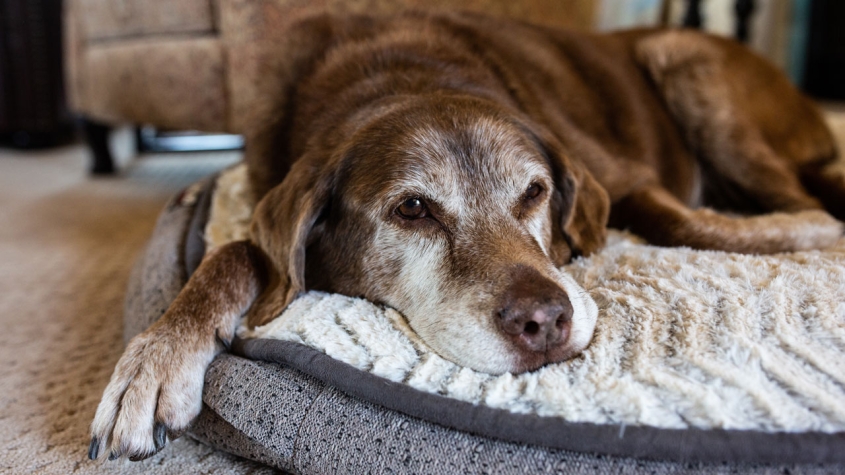Pet Loss Resources and Support
The death of a pet can have a profound effect on individuals, families and other animals. We invite you to review the information on this page and access any of the resources that speak to you.
The experience of grieving
Grieving the loss of a companion animal can be a complicated process. Pets offer us love, companionship, joy and comfort. They occupy a very special place in our lives. Their death or illness is naturally a source of substantial grief and sadness.
Grief can begin before, during or after a death. The grieving process involves physical, intellectual, emotional, social and spiritual levels. We all respond differently to loss and there is no “normal” way to grieve the loss of a pet, nor is there a prescribed timeline that grief will follow.
The following are some ways that one may experience grief, in no particular order.
Physical: Crying, nausea, fatigue, body aches, changes in appetite, weight loss or gain, sleeping more or difficulty sleeping, feeling tense or jittery, restlessness
Intellectual: Difficulty focusing or performing usual tasks of daily life or work, denial, sense of unreality, feeling preoccupied by the loss
Emotional: Anxiety, sadness, anger, frustration, guilt, numbness, loneliness, embarrassment, hopelessness or helplessness
Social: Feeling withdrawn, difficulty engaging with your usual activities of interest, wanting to spend more or less time with friends and family, feeling isolated in your grief, seeking distraction from your emotions
Spiritual: Bargaining with or feeling anger toward your higher power, questioning your religious or spiritual beliefs, searching for meaning in this loss, questioning the afterlife

All of these are considered a “normal” part of the grieving process. Grief is a gradual journey which rarely follows a simple, straight path. It is perfectly normal to have a journey with grief that is more of a winding road with setbacks along the way. Your emotions may fluctuate from day to day, or even moment to moment. Be kind with yourself as your body and mind navigate this loss.
No one needs to face grief alone. There are many supportive resources to help, some of which are listed below.
Children and pet loss
Be mindful that children comprehend death differently than adults do. Their reactions and grieving journey will look different from an adult and will vary depending on their age. Rather than hiding information from a child, welcome them to involved in the conversation about the illness or death of a pet. Be honest and allow them to ask questions, even if you don’t have all the answers. Listening is the most important thing. It is okay to let your child see you sad and allow them to express their emotions, too. Allowing them to be part of memorializing the pet through creative processes like drawing a picture, writing a story or sharing memories can be healing for both the child and family.

Connect with others through hotlines, chats and support groups
The Cornell Pet Loss Support Hotline
Our hotline is staffed by volunteer veterinary students who have undergone extensive training with professional grief counselors. The very first pet loss support hotline was set up in 1989 at the University of California at Davis, and we have used their guidelines in the construction of our own.
The Pet Loss Support Hotline is available via Google Voice to support you Sundays and Tuesdays 6-9 p.m. EST.
Call us at 607-218-7457
Google Voice will prompt you to enter your name before connecting. To remain anonymous, you can say “anonymous” or just enter your first name.
Please check back frequently as our hours may change depending on volunteer availability.
Online chat groups and other resources
The Argus Institute’s Human Animal Bond Trust
A pet loss group that meets Thursdays 6:30-8 p.m. MT via Zoom
Association for Pet Loss and Bereavement
Offering chat rooms and video support groups
Michigan State University Veterinary Medical Center
A pet loss support group that meets the second and fourth Wednesday of the month from 6:30-7:30 p.m. Visit their website or email vsw@msu.edu
Lap of Love
Zoom support groups for pet loss or anticipatory grief, behavioral euthanasia, unexpected loss, individual sessions, as well as a pet loss course. Appointment dates and times vary.
The Pet Loss Support Page
Providing resources on pet loss, quality of life, euthanasia, bereavement and more
HoofBeats in Heaven
Groups and chats about horse loss.
Facebook
Facebook has many informal groups for pet loss. Type “pet loss” or a related term into the search bar on the Facebook page. You will find many people who want to connect with others who have had a loss.

Grief in companion animals
Companion animals can form close attachments and may display changes in behavior consistent with grief when another pet in the home dies. Surviving pets may seek out attention more often, be more reactive to environmental stimuli, appear anxious or withdrawn or have changes in their daily routine (such as eating, playing, sleeping). While this may be a response to the loss of a companion animal, it can also be in response to changes in the emotions and routine of the humans in the home.
Be aware that any persistent change in your pet’s behavior warrants a physical exam by a veterinarian. You should not assume it’s related to grief. Of particular note is if your pet is not eating or drinking, or has any changes in urination or defecation, including accidents in the house.
To help your pet with the changes associated with the loss of another pet, the following is recommended:
- Keep your daily routine as consistent as possible.
- Be a secure base for your pet. While you can certainly comfort them, you should also be reassuring and calm.
- Engage them in activities they enjoy (such as exercise, food toys, or positive reinforcement training).
- Be patient, it may take weeks to months for things to be “back to normal.”




